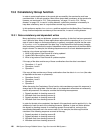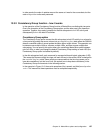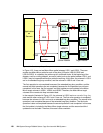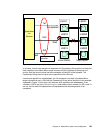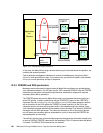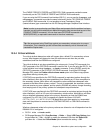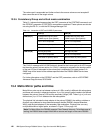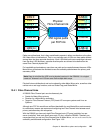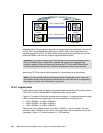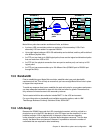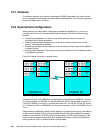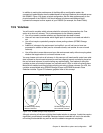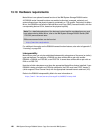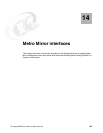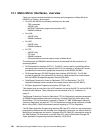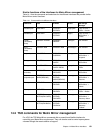
144 IBM System Storage DS6000 Series: Copy Services with IBM System z
Figure 13-6 DS6000 FC ports
Dedicating Fibre Channel ports for Metro Mirror use guarantees no interference from host I/O
activity. This is recommended with Metro Mirror, which is time-critical and should not be
impacted by host I/O activity. The Metro Mirror ports used provide connectivity for all LSSs
within the DS6000, and can carry multiple logical Metro Mirror paths.
Metro Mirror FCP links can be direct connected, or connected by up to two switches.
13.4.2 Logical paths
A Metro Mirror logical path is a logical connection between the sending LSS and the receiving
LSS. An FCP link can accommodate multiple Metro Mirror logical paths.
Figure 13-7 on page 145 shows an example where we have a 1:1 mapping of source to target
LSSs, and where the three logical paths are accommodated in one physical link:
LSS1 in DS6000 1 to LSS1 in DS6000 2
LSS2 in DS6000 1 to LSS2 in DS6000 2
LSS3 in DS6000 1 to LSS3 in DS6000 2
Alternatively, if the volumes in each of the LSSs of DS6000 1 map to volumes in all three
secondary LSSs in DS6000 2, there will be nine logical paths over the physical link (not fully
illustrated in Figure 13-7). We recommend a 1:1 LSS mapping.
Important: If you want the same set of Fibre Channel links to be shared between Metro
Mirror and Global Copy or Global Mirror, consider the impact of the aggregate data
transfer. In general, we do not recommend sharing the FCP links used for Metro Mirror,
including the physical network links, with other asynchronous remote copy functions.
Note: If you use channel extension technology devices for Metro Mirror links, verify with
the product’s vendor what environment (direct connect or with SAN switch) is supported by
the vendor, as well as which SAN switch is supported.
LSS1A
1A00
1A01
LSS1B
1B00
1B01
LSS14
1400
1401
LSS15
1500
1501
DS6000#1
DS6000#2
Server0
Server1
Server0
Server1
Metro Mirror Pairs
Fibre Channel links
Fibre Channel links



